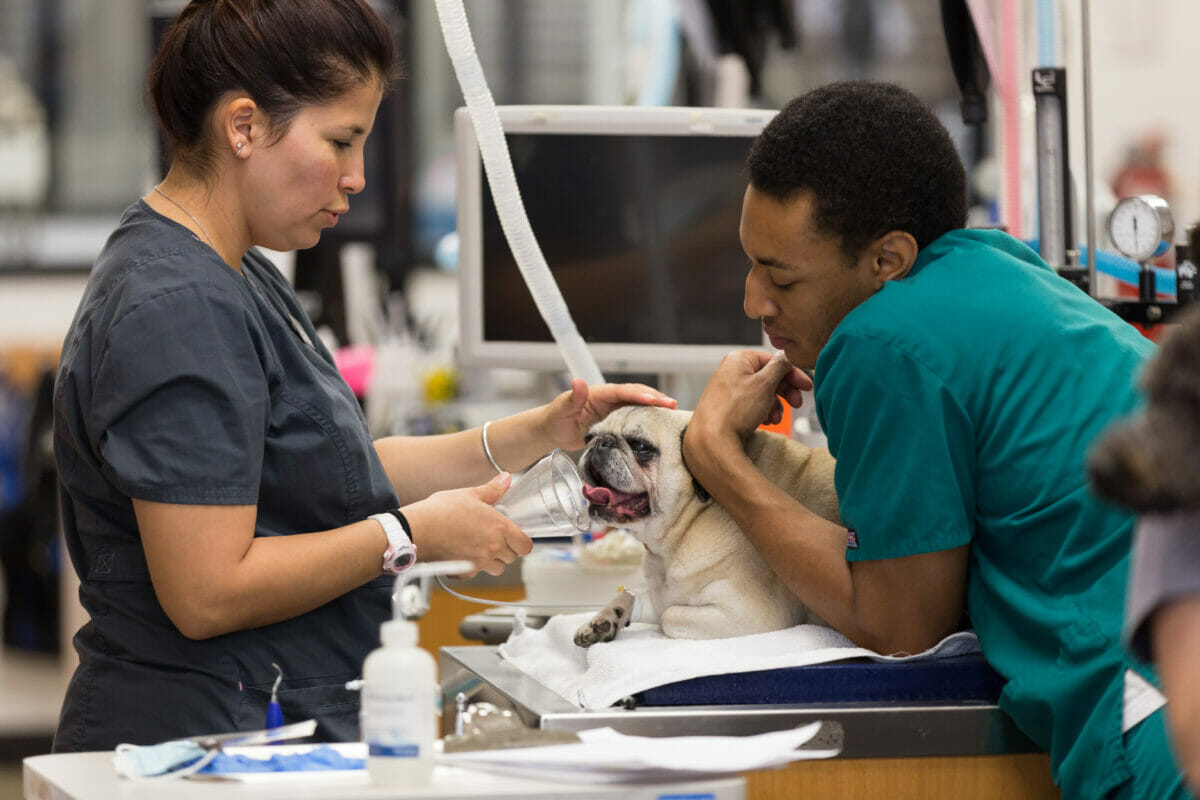
Clinical Preceptor and Site Information
External Clinical Sites and Preceptors
Distributive Clinical Education Facilities
Clinical sites and preceptors utilized for the clinical education of Western University of Health Sciences College of Veterinary Medicine students are evaluated prior to hosting student courses or rotations by the college’s Committee on Clinical Instruction.
The evaluation process is intended to ensure all potential student clinical experiences meet college expectations for high quality education. The following guidelines are provided to assist facilities and preceptors in determining their eligibility. There are areas of overlap between the documents. Please review the below document for information about the Roles and Responsibilities of Key Players in Clinical Programs.
Roles and Responsibilities of Key Players in Clinical Programs
In Years 1 and 2 courses, clinical sites serve as a venue for Veterinary Clinical Sciences and Skills course activities related to large animal handling, husbandry, and safety. These activities are led directly by Western University of Health Sciences College of Veterinary Medicine faculty at the site. In Year 2, students practice more advanced technical skills (vaccinations, catheter placement, sedation, diagnostic imaging, bandaging, and dentistry). Years 1 and 2 clinical sites include private and public livestock production facilities, equestrian facilities, equine veterinary clinics, and other educational institutions.
Facilities Guidelines for Years 1 and 2 Clinical Sites
In Year 3 Courses, clinical sites serve as a venue for two-week clinical courses focusing on general medicine and surgery concepts for the major domestic and zoo species, as well as laboratory animal medicine and ancillary diagnostics (anatomic and clinical pathology). preceptors at each clinical site facilitate student learning in the clinical setting and evaluate student performance in clinical case management and development of technical skills. College faculty provide oversight of student learning through site visits and other course-dependent activities. Faculty course leaders determine course learning objectives, ancillary learning activities (e.g., written assignments, videoconference, discussion boards, etc.), and assess student knowledge, skills, behaviors, and attitudes via course assignments and examinations. course leaders determine the student’s overall performance using both their assessment of the student as well at the preceptor’s evaluation of the student’s performance at the clinical site.
Facilities Guidelines for Year 3 Clinical Sites
Click the link below to see the Preceptors and Clinical Sites Guidelines.
In Year 4 Core Rotations, clinical sites serve as a venue for Core Small Animal Internal Medicine, Core Equine Internal Medicine, Core Small Animal Surgery, and Core Equine Surgery rotations. These clinical sites are specialty/referral practices with preceptors who are board certified by either American College of Veterinary Internal Medicine or American College of Veterinary Surgeons, depending on the rotation. The emphasis for student learning is on case management and clinical decision-making. Both the preceptor and Western University of Health Sciences College of Veterinary Medicine faculty provide instruction and supervision of students. This includes case and topic rounds at the clinical site as well as those conducted by the course leader via videoconference several times during the rotation, submission of problem-oriented veterinary medical records (POVMRs), and other assignments designed to develop and evaluate clinical problem-solving skills. Faculty course leaders determine course learning objectives, ancillary learning activities (e.g., written assignments, videoconference, discussion boards, etc.), and assess student knowledge, skills, behaviors, and attitudes via course assignments and examinations. course leaders determine the student’s overall performance using both their assessment of the student as well at the preceptor’s evaluation of the student’s performance at the clinical site.
Facilities Guidelines for Year 4 Core Clinical Sites
Click the link below to see the Preceptors and Clinical Sites Guidelines.
Year 4 Selective Rotations, clinical sites serve as a venue for rotations approved for specific disciplines and specialties. preceptors provide primary instruction and supervision of students and college faculty monitor student performance. Faculty course leaders determine course learning objectives. Rotation Administrators monitor and assess student learning via case logs submissions. course leaders determine the student’s overall performance using both the Rotation Administrators assessment of the student as well at the preceptor’s evaluation of the student’s performance at the clinical site.
Facilities Guidelines for Year 4 Selective Clinical Sites
Guidelines regarding the specific facility (clinical site guidelines) and personnel needs (preceptor guidelines) for clinical rotations in given Year 4 rotations. Click the link below to see the Preceptors and Clinical Sites Guidelines.
- Complementary/Alternative/Integrative Medicine Practice
- Laboratory Animal Medicine Practice
- Anatomic Pathology
- Neurology
- Clinical Pathology and Ancillary Diagnostics
- Nutrition
- Anesthesia
- Oncology
- Aquatic Medicine Practice
- Ophthalmology
- Avian Medicine Practice
- Poultry Medicine Practice
- Beef Cattle Medicine Practice
- Public Health
- Behavior
- Public Policy
- Camelid Medicine Practice
- Radiation Oncology
- Canine Medicine Practice
- Diagnostic Imaging
- Cardiology
- Regulatory Medicine
- Dairy Medicine Practice
- Research
- Dentistry
- Rural Practice
- Dermatology
- Shelter Medicine Practice
- Emergency Medicine & Critical Care
- Sports Performance/Rehabilitation Practice
- Epidemiology
- Small Ruminant Medicine Practice
- Equine Medicine Practice
- Surgery
- Exotics Animal Medicine Practice
- Swine Medicine Practice
- Feline Medicine Practice
- Theriogenology
- Food Animal Medicine Practice
- Toxicology
- General Practice
- Wildlife and Conservation Medicine Practice
- Internal Medicine
- Zoological Medicine Practice
- Global Health

